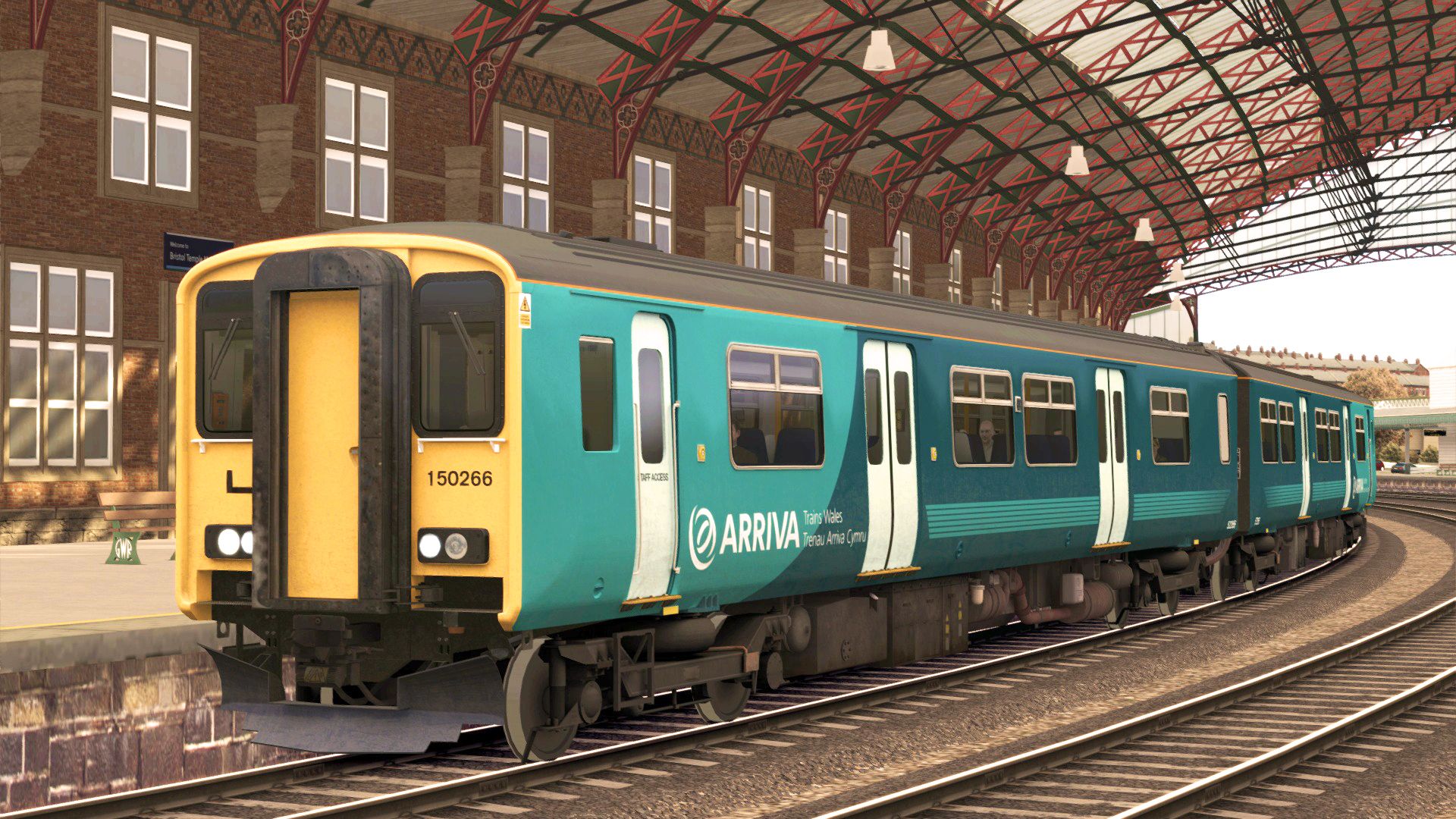
Train Simulator: Arriva Trains Wales Class 150/2 DMU
Buy Train Simulator: Arriva Trains Wales Class 150/2 DMU
Due to the expiration of the license agreement, this product has been removed from Steam. Armstrong Powerhouse do sell an alternative Class 150/2 DMU pack which contains the same liveries, please scroll down the page for more details.
The Arriva Trains Wales Class 150/2 DMU DLC for Train Simulator Classic was developed by Armstrong Powerhouse and released in 2017. It features the British Rail Class 150/2 diesel multiple unit, introduced in the late 1980s as part of the Sprinter family. These units were widely used on regional services across Wales, and the DLC recreates them in the distinctive Arriva Trains Wales livery, providing players with an authentic regional rail experience.
The add-on includes a highly detailed model of the Class 150/2, complete with accurate cab controls, gauges, and animations. Players can operate the unit across compatible UK routes, managing acceleration, braking, and other operational features such as wheelslip protection and GSM-R communications. The physics and performance closely reflect the real-world behaviour of the DMU, ensuring an immersive driving experience.
The DLC comes with three career scenarios for the South Wales Coastal: Bristol to Swansea route: the 11:10 Swansea to Cardiff Central service, the 21:15 Maesteg to Cardiff Central service, and the 16:07 Taunton to Cardiff Central service. These scenarios task players with maintaining timetables, handling regional passenger services, and navigating the line’s operational challenges. The scenarios highlight the versatility of the Class 150/2 in both commuter and regional operations.
Reception of the DLC was positive, with players praising its attention to detail, realistic performance, and authentic Arriva Trains Wales liveries. The inclusion of these scenarios provides varied gameplay, and the Class 150/2 remains a popular choice for those looking to experience British regional diesel operations within Train Simulator Classic.
Train Simulator: Arriva Trains Wales Class 150/2 DMU Manual
Armstrong Powerhouse: Class 150/2 DMU Pack
Armstrong Powerhouse sell a Class 150/2 DMU Pack that contains both of the Arriva Trains Wales liveries plus many more. For more information about this pack, click here.


Class 150/2: History
Do you have an interest in the history of the Class 150/2 DMU? Our friends over at Train Testing have an excellent archive of images and information regarding the test programme undertaken before the units entered service. Click here to take a look. Images used with the kind permission of Dave Coxon.


Class 150/2 Books
Browse a range of products related to this train. Click on an image to view the product page. Please note that prices are subject to change.

Cab Ride: Plymouth to Gunnislake - Class 150 DMU DVD
£19.99
Related Searches
Train Simulator Arriva Trains Wales Class 150/2 DMU Download
Train Simulator Arriva Trains Wales Class 150/2 DMU is available to purchase and download from a range of vendors......
Train Simulator Arriva Trains Wales Class 150/2 DMU Key
There are a wide range of resellers that may offer keys for Train Simulator Arriva Trains Wales Class 150/2 DMU. This is....
Train Simulator Arriva Trains Wales Class 150/2 DMU Review
The Steam store provides a review system enabling you to make an informed choice before buying this....
Train Simulator Arriva Trains Wales Class 150/2 DMU Free Download
Train Simulator Arriva Trains Wales Class 150/2 DMU is available to purchase and download from the link(s) shown near....
Train Simulator Arriva Trains Wales Class 150/2 DMU PlayStation
Train Simulator Classic and it's back catalogue of DLC are not available on the PlayStation platform. There...
Train Simulator Arriva Trains Wales Class 150/2 DMU Xbox
Train Simulator Classic and it's back catalogue of DLC are not available on the Xbox platform. There are no....














